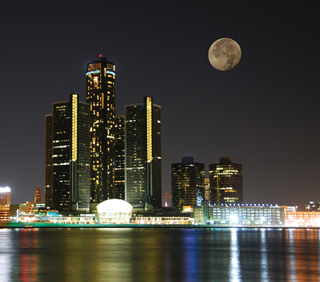Welcome to Blue Book!
Are you ready to join the thousands of companies who rely on Blue Book to drive smarter decisions? View our plans and get started today!
Still have questions? We’d love to show you what Blue Book can do for you. Drop us a line– we’ve been waiting for you.

“It’s hard to disagree with the term ‘food desert’ when most people would like to shop at places other than party stores or gas service stations,” noted Stone. Luckily, however, this is changing. “A few big companies have come in to support the lack of good, dependable shopping with variety, fair pricing, and high quality.”
Dominic Russo, buying and sales manager for Rocky Produce, Inc. at the Detroit Terminal Market, agrees, saying chains like Whole Foods and Meijer have moved into the downtown area recently. “We haven’t seen a big retailer come into the city limits in I don’t know how many years,” he enthused. “Maybe the 1970s?”
Trends on the Markets
Even in tough times, Casini said consumers continue to demand quality and variety, though they want reasonable pricing as well. Shoppers are also interested in trying new items, to shake up meal planning and broaden taste palettes. “Every day something new comes up,” he notes.
Russo said much of the demand for new items is driven by the latest food fads. “When people get a hold of a different vegetable or fruit with a high content of this vitamin or that,” he says, “it spreads pretty quickly and the [item] will be a frontrunner.” Currently, he points out, “Consumers seem to be buying berries more than anything; berries are definitely our biggest category.”
The need to keep up with current trends is what sets the successful companies apart, according to Stone. “Ben B. Schwartz has been around since 1906. We know that if you’re doing the same thing you were doing before—a year ago or five years ago—then you’re behind. The biggest thing,” he explains, is “more people are eating produce and attempting to live a healthier lifestyle than ever before.”
Russo concurs, crediting social media for “helping out big-time with people caring more about what they eat. People are more aware of food, what’s not good for them versus what is good for them.” Russo also sees the increase in food allergies as driving the move to better eating, as people cook more of their own food, creating meals from “more complex recipes, with more items in their salads and with fruit.”
Ethnic Cuisine
Ethnic diversity and exposure to diverse cuisines is also playing a role in what consumers buy. Stone gives some credit to television, especially the Food Network, for introducing viewers to vegetables, fruits, and spices they probably weren’t aware of while growing up, and are now much easier to find and buy.
Many of these items are turning up in restaurants as well, as ethnic fusions are a hot trend. Mixing Asian and Latino fruits and vegetables in appetizers is big on menus, just as Peruvian, Korean, and regional cuisines are attracting more customers. Michigan’s restaurant industry totals more than $12 billion in sales annually, with a great deal centered in the Detroit metropolitan area.








